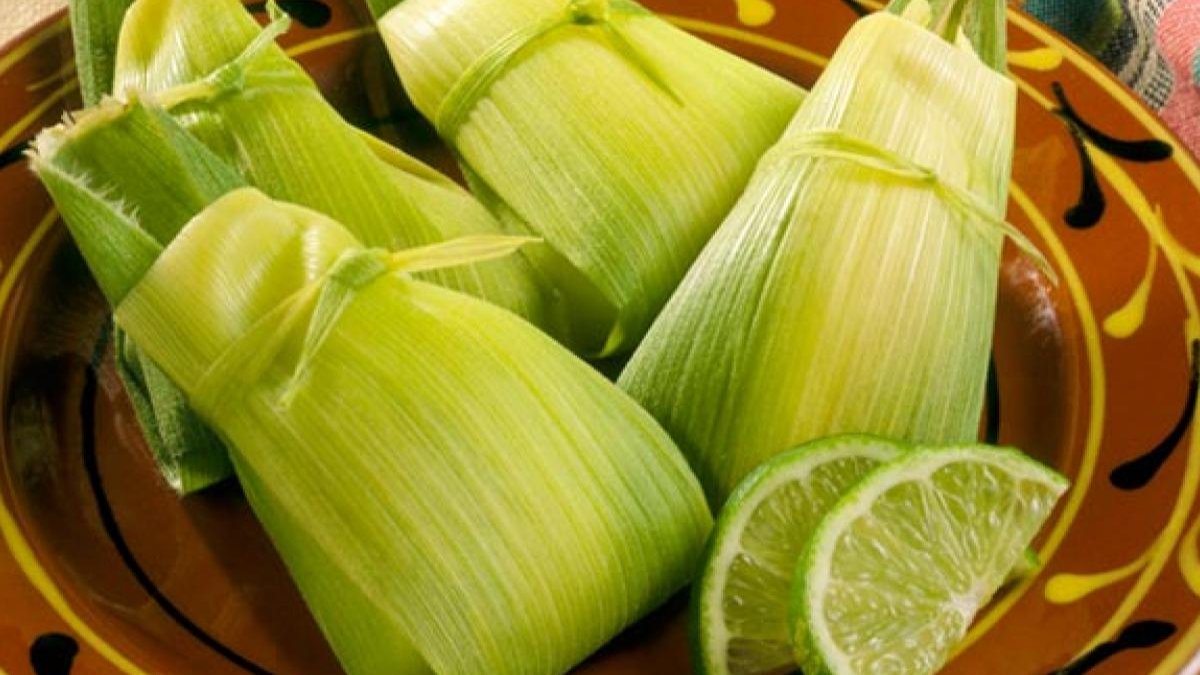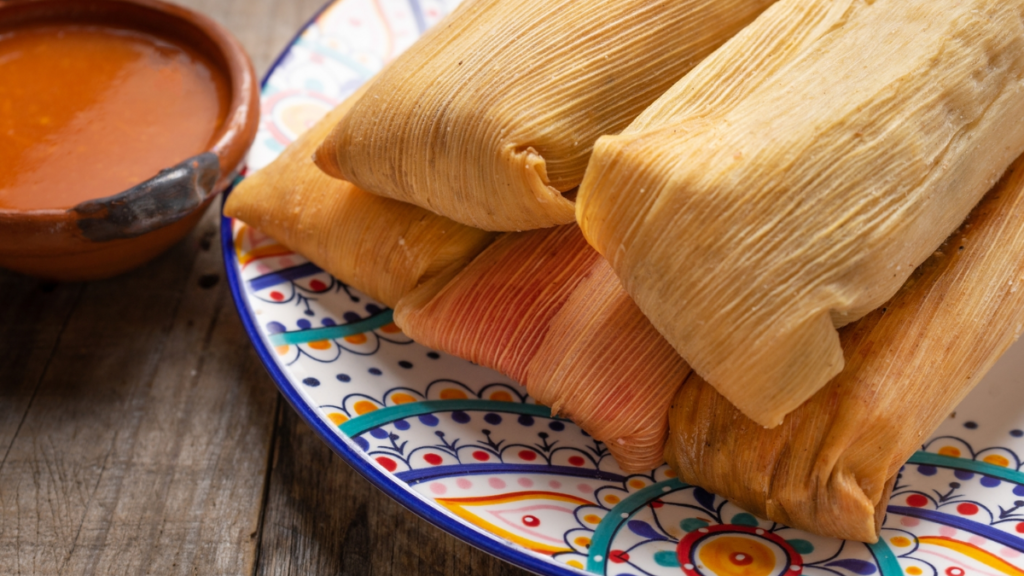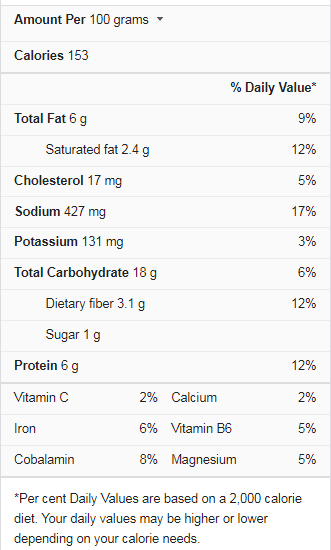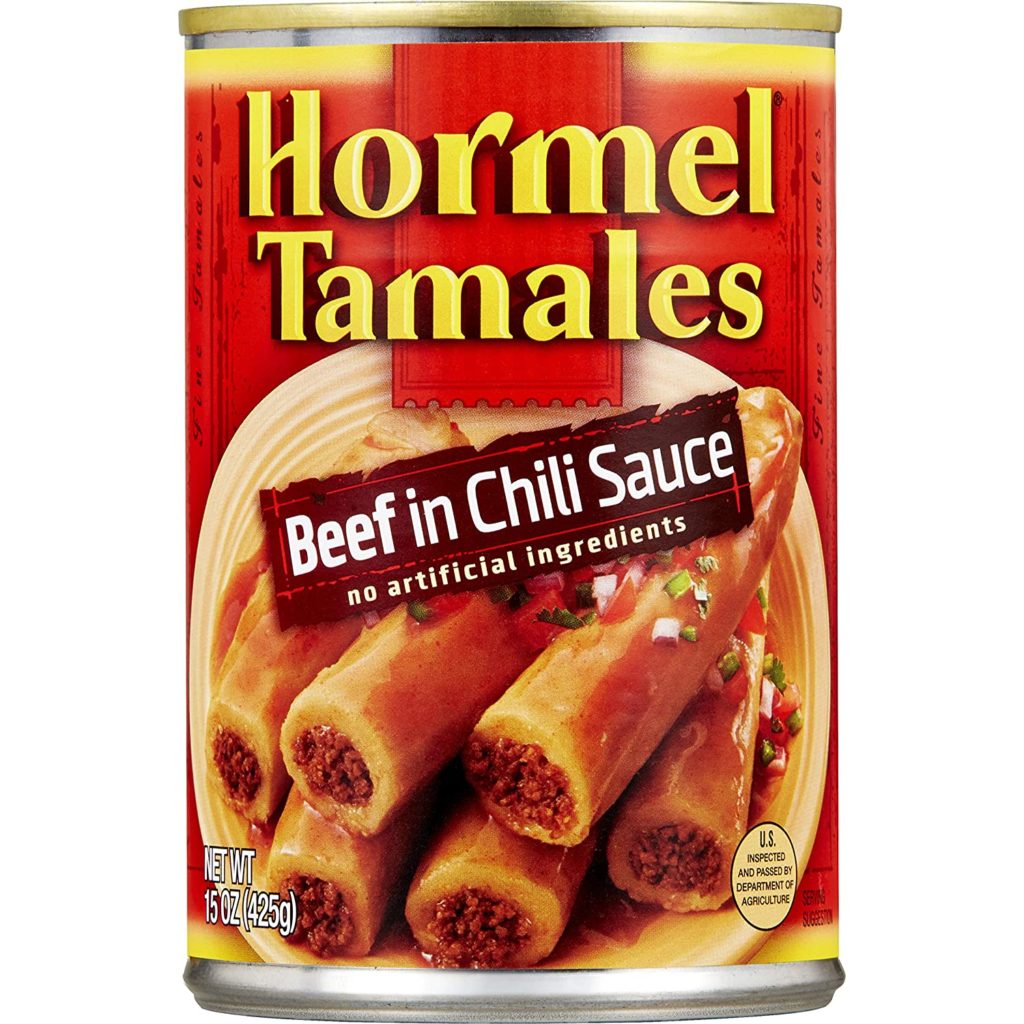Tamales are high in folate, vitamin A, calcium, zinc, phosphorus, potassium, iron, and other minerals. Chili peppers can add a kick to tamales, and the capsaicin in spicy peppers may enhance vascular and metabolic health. Tamales are on many families’ Christmas meals. Traditional Mexican and Native American food involves stuffing masa dough with meat, cheese, chili peppers, or beans, steaming it in a corn husk or banana leaf, and eating it with salsa or hot sauce.
Whether tamales are a family holiday tradition or looking for new Christmas brunch ideas, you might wonder if they’re healthy. “Tamales are normally considered healthy,” says Bansari Acharya, R.D.N., a registered dietitian and writer for FoodLove. “Especially because they’re steamed instead of fried.” Portion control is necessary because of the high fat and carbohydrate content. Here’s how to incorporate this seasonal delight into your healthy-eating plan: Christmas morning or a random Tuesday night.
Tamale Nutrition Facts
Health Benefits of Tamales
Instead of buying unhealthy tamales from the shop, please make your own to increase their nutritious value. Fillings can be made with vegetables, chicken, or beans instead of beef or pig. You’ll be able to increase tamales’ fiber and nutrient content while also lowering the saturated fat intake. Also, according to the Eating Well website, substituting part-skim ricotta cheese for the lard commonly used in corn dough would help reduce the fat and calories in tamales.
Macronutrients in Food
A 100-gram serving of tamales has around 18.12 grams of carbohydrates, which serves as your body’s primary fuel source. 6.12 grams of total fat, including 2.4 grams of saturated fat, are found in the same serving size. This amounts to 9% of the daily fat requirement and 12% of the daily saturated fat requirement. A diet high in total and saturated fat raises blood cholesterol levels and raises the risk of heart disease.
In addition, a 100-gram serving of tamales has about 3.1 grams of dietary fiber, meeting 10% to 12% of your daily fiber requirements. Fiber supports regular bowel motions and maintains a healthy digestive system. A 100-gram portion of tamales provides 6.28 grams of protein to the diet. Protein, a nutrient your body needs to repair and grow new cells, accounts for 13% of the daily value.
Mineral Resources
Iron and phosphorus are plentiful in tamales. A 100-gram meal of tamales has 1.22 milligrams of iron, 7 percent to 15% of your daily iron need. The exact amount contains 99 million phosphorus, enough to meet 14 percent of your daily needs.
Iron aids in producing the energy molecule adenosine triphosphate, or ATP. Phosphorus is used by the body to build, maintain, and repair tissues and cells. Tamales also have 427 milligrams of sodium per 100-gram serving, 19% of the daily sodium requirement for healthy persons. High blood pressure can be caused by overeating sodium.
Vitamin-Packed
Each 100-gram serving of tamales provides about 10% to 11% of your daily vitamin B-3 requirements. Vitamin B-3 improves blood circulation, but it also aids in the production of stress and sex hormones. Tamales are high in vitamins B-6 and B-12, with a 100-gram meal containing around 0.14 milligrams of vitamin B-6 and 0.54 micrograms of vitamin B-12.
This corresponds to 11% of your daily vitamin B-6 requirement and 23% of your daily vitamin B-12 requirement. Vitamin B-6 is required to produce neurotransmitters, which are molecules that convey messages from one nerve cell to the next. The vitamin also aids in proper brain growth, and vitamin B-12 promotes the health of nerve cells.
Are Tamales Good for Losing Weight?
One tamale has 285 calories and 11.38 grams of fat, and 4.45 grams of saturated fat. Lard is used in making traditional tamales, which enhances the saturated fat level of the dish. Too much saturated fat in your diet can contribute to weight gain, high cholesterol, and heart disease. Tamales are generally thought to be healthful, according to Bansari Acharya, R.D.N., a registered dietitian and FoodLove writer. “Especially since they are steamed rather than fried.”
However, portion control is essential because of the fat and carbohydrate levels. Tamales are traditionally made with masa dough, with a high net carb content, and this is because it is derived from maize, a starchy grain. We created our own Keto Tamales recipe, encasing each corn husk bundle in a high-fat, low-carb almond flour dough.
How Many Tamales Should I Eat?
Tamales are high in folate, vitamin A, calcium, zinc, phosphorus, potassium, iron, and other minerals. Chili peppers can add a kick to tamales, and the capsaicin in spicy peppers may enhance vascular and metabolic health. Hold a tamale in your palm and peel back the wrapping, commonly composed of corn husks or plantain leaves, if you’re unsure how to consume them. The inside of tamale can then be eaten, but the wrapper should never be eaten. Wrong!
The tamale is no longer a typical food due to its time-consuming cooking, and the tamale is now connected with special family gatherings and holidays such as Christmas. Tamales are best consumed within 4-5 days of preparation, though we doubt you’ll have many on hand. Two to three medium-sized tamales make up an average tamale dish, frequently served with rice, beans, corn tortillas, and fruit on the side.
Is the Sugar Content of Tamales High?
According to Eating Well, chicken tamales are often lower in fat and calories than traditional varieties, including a pork filling and lard added to the corn dough that encases the meat. However, chicken tamales can still contain sugar, especially if they’re slathered in sauce, common in the United States. The majority of the carbs (15.3 grams) come from starch. And however, there is some fiber and a little sugar in tamales. One serving has 1.6 grams of sugar and 3.3 grams of fiber, 13% of the daily fiber recommendation for women of 25 grams.
According to Pascoe, traditional tamales should be avoided if you have high blood pressure or diabetes. “Instead, I’d suggest making a dozen or so nutritious tamales with all of our healthy substitutes.”Compared to tamales prepared using the traditional nixtamalization technique, the classic and ecological nixtamalization processes had the highest total, soluble, and insoluble dietary fiber content and the highest RS content lower in vivo glycemic index.
How Should Tamales be Consumed?
So the most vital step is to remove the corn husk. Once you’ve done that, the following mistake is to meddle with perfection. If you have to, sour cream could be added. Although plantain leaves or banana leaf wrappers can be consumed, we do not encourage it because it is not conventional. To further bring up the taste of your tamales, top them with salsa, cotija cheese, sour cream, or mole. The outer covering of the tamale should be unwrapped and discarded before eating. The fresh tamale will be inside the wrapper. We recommend topping it with salsa, guacamole, cilantro, or sour cream.
We recommend eating your tamale with a fork if it’s fully loaded. Reheating your tamales before eating isn’t necessarily necessary. While they’re usually eaten hot and straight from the pot, there’s no reason you can’t eat them cold! We recently learned via a viral Twitter thread that there are a lot of yts who don’t become aware you had to untie tamales before eating them. People delved right in – maize husk and all – and didn’t like it because the Hoja de maz isn’t supposed to be eaten.
Do Tamales have Meat?
This simple recipe and step-by-step guide will teach you how to make tamales. They’re easy to personalize (recipes for chicken, beef, pork, and vegetarian fillings are included), made without lard or shortening, freeze well, and taste great. Filling ideas and recipes can be found in the blog post linked above. Start with the meat: Pork and beef are the most popular meats for tamales. In a slow cooker on low, combine all ingredients (6-8 hrs). I usually cook the pork the day before making tamales, especially if I make a large batch.
Red chile pork (tamales rojos) is a popular Mexican tamale made with soft pork shoulder in a rich red chile sauce. The filling is wrapped in light masa dough and baked in corn husks on the stovetop. These light, pliable tamales have a bright, fruity green chile made with roasted poblanos, tomatillos, and cilantro to complement the pork carnitas.
Conclusion
Tamales are a pre-Columbian Indigenous food eaten in most Latin American countries, including the Caribbean, from Mexico to Brazil. They’re a significant part of the culture. As a Costa Rican, I couldn’t fathom Christmas without at least one tamaleada, a custom in which relatives and friends meet to taste our eagerly anticipated tamales. Because so many people in different nations eat tamales, the recipe includes several variations, including sweet and savory versions. They’re all baked with masa (corn dough) and wrapped in a corn husk or banana leaf.
Tamales are a popular Mexican dish frequently served at New Year’s Eve and Christmas Eve meals. They’re steamed corn dough bundles loaded with savory contents like spinach and mushrooms or cheese and green chiles and beef, pork, or chicken. Despite their high fat and sodium content, tamales are high in vitamins, minerals, and fiber, contributing to good health.




